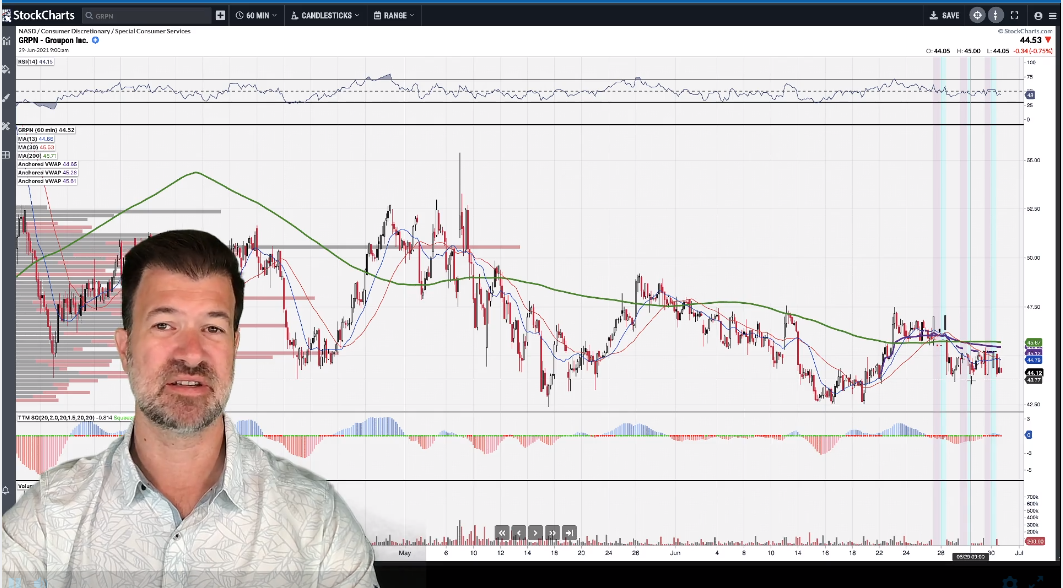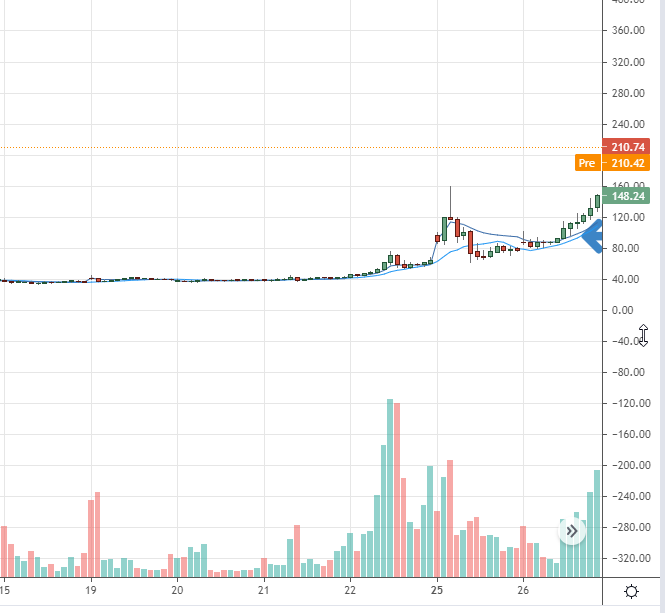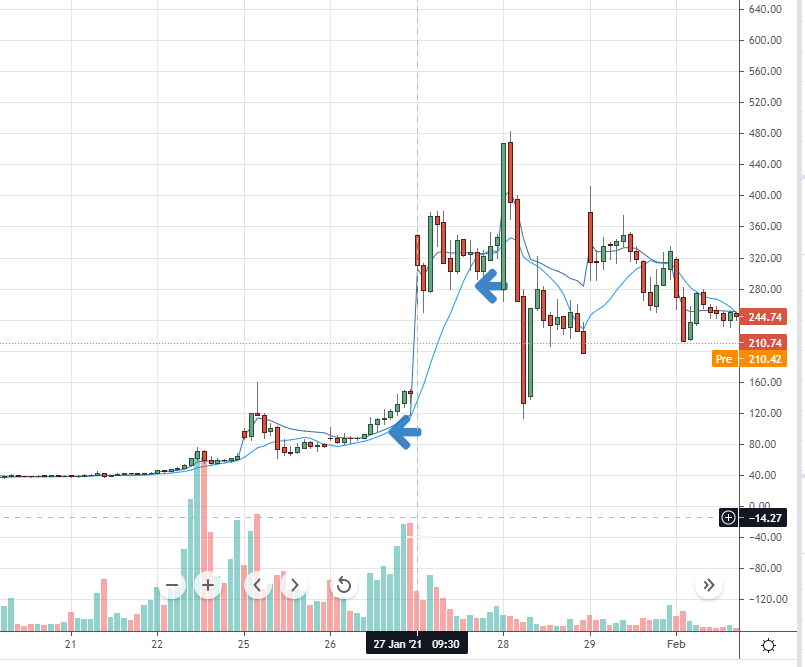If you’ve followed my trading long enough, you would know I set up many of my trading ideas using options spreads.
Last week I made a nice “sell the news” play in AMAZON (AMZN) . You can read more about the specifics of the trade here.

Now I made this bet on AMZN going down by selling a call spread i.e. selling a call option with a strike close to the current price to receive a premium and buying a call option further away from the current price for less premium.
If the stock goes down or at the very least doesn’t go up above the strike plus premium, I will benefit from the trade.
This is great for stocks I think will not go up much higher at a major resistance level. But what about stocks with exponential squeeze potential?
How can I short these stocks and still control my risk?
Today we’ll discuss my favorite strategy to do just that.
Meme Stock Mania
Let’s use Meme stocks as an example of how to leg into a long call spread (which involves buying the near-priced strike first), which is slightly different from my AMZN trade.
Meme stocks such as GAMESTOP CORP (GME) and AMC ENTERTAINMENT (AMC) have been in what some people might call a mania. They have made parabolic moves that some traders are unsustainable (while others are waiting for the moon).
Now some inexperienced traders might want to bet on the price going down, shorting stock without pre-defining risk.
They might short GME at 150, thinking it’s way too high coming from $5 only to see it go to $500 blow them out, then fall back to their target of $100 without them and a trading account left.
I know many traders who have blown out whole accounts by doing this, even successful experienced traders who get seduced into shorting a parabolic short.
Setting up the trade
A better way to bet on a stock going down is to leg into a long call spread. This may seem counterintuitive, but you begin by betting on the price going up first by buying a call.
So, for example, if you think GME is too high at $120 based on fundamentals, but at the same time, you see and accept it is accelerating upwards at the end of the day because shorts are trapped. It is still the front side of the trade.
Then you understand there is no telling how high the stock can go, and it might gap up.
A “safer way” to bet against the stock is to buy a call going with the trend at a strike of $150 (when the underlying price is $120) then wait for a lower high to sell a call at a higher strike putting on your short bet safely.

We get long 150 calls when GME is 120 because we think it’s too high but can blow shorts out and go higher, we want to sell calls hedged after confirmation.
Now we wait for momentum in the stock to slow before we get into shorting calls. We must also be prepared to lose our premium paid on the long side, this is the risk of legging into an options trade.
The next day the stock opens at $350, we start laughing because we wanted to short the stock but correctly got long waiting for our signal.

We get short calls at 320 when a lower high is made, we are fully hedged now and protected against any adverse moves to the upside
Putting on the 2nd leg (our short trade)
We first did the opposite of what we want to do by getting long on the front side, and have taken a short position in the stock at $320. Now we wait for a lower high for confirmation that it is the backside of the trade, we can sell $320 calls.
So we are now officially fully hedged. If the stock goes up we will not lose anything but unrealized gains on our long calls. If the stock goes down or sideways, we can make money on the calls we sold and the initial calls.
The next day while hedge funds are blowing up when GME is at $500 we are sitting pretty because we are fully hedged.
Then when chasers who think GME is going to $1000 get bagged at $500 our short calls are successful as GME falls to $100 as predicted. Our long calls are at break-even, and our short calls have made $250. We were successful shorting the stock but did it by getting long first!
Bottom Line
Trading is first and foremost about defining risk, knowing how much you can lose on any given trade. Legging into shorting calls by buying calls first can protect us psychologically and financially by making sure we will not blow up our account fighting a parabolic stock on the front side of the trade as even legendary traders have done in the past.






3 Comments
Perfect strategy. But I’m wondering why not using spread put options.
I have been selling option vertical puts(mostly) and calls on “think or swim”. I have not been buying the put and selling the put individually, but together on “think or swim”. Which way is safer?
Thank you in advance for your reply.
Long may profit